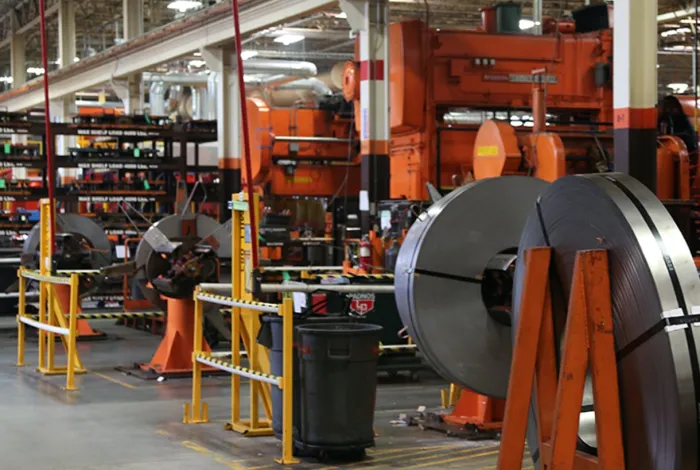

Now Available!
Get your copy of the 7th Annual State of Smart Manufacturing and hear from 300+ manufacturers in this new survey report!
Subscribe to Our Blog
For a monthly digest of expert insights, data points, and tips like the ones in this article.

Last week I had the opportunity to attend Forbes’ second annual Reinventing America Summit, a gathering of key players in the advanced manufacturing ecosystem.
The innovation, ingenuity and enthusiasm on display reinforced my conviction in the resurgence of American manufacturing and our ability to compete globally. Clearly challenges remain – the event also explored many of the hurdles facing manufacturers today, and presented some possible solutions.
Here is what I took away from the event:
- Additive manufacturing is already making an impact. Despite fairly limited applications, 3D printing for consumer applications has attracted broad attention. Additive manufacturing is the same concept applied in the industrial setting, where it is taking hold and has the potential to significantly affect operations. Just as the earliest movies were simply live theater captured on film, Jordan Brandt, a technology futurist for Autodesk, reminded attendees that using 3D printers to make existing parts is just the first step.
Additive manufacturing promises to make a great impact when engineers take a systems-based approach to integrating it into their operations and as printers incorporate different materials or even create new materials altogether. NanoSteel CEO David Paratore shared an interesting use case: he has seen 3D printers create stainless steel that is magnetic. As companies like NanoSteel create stronger, lighter steel with new ways to make it, $4 billion steel mills could become obsolete. The possibilities are powerful, and as re:3D Founder Samantha Snabes said, “we need to think beyond toys and trinkets.”
- The talent shortage is real, widespread and growing. The subject of talent came up again and again, and the scarcity of workers goes beyond manufacturing to hospitality, food service and transportation. Though it’s a complex area where no single company can solve the problem, companies can take steps to improve hiring, training and retention. Kip Wright at Manpower challenged companies to think about their human resources in the same way they think about financials: create an annual plan and conduct monthly assessments to monitor turnover, succession planning and development. And particularly for Millennials entering the workforce, employees want their work to have purpose: communicate your mission and show how they can make an impact.
- The manufacturing resurgence calls for collaboration across disciplines, companies and regions. Collaboration was a resounding theme at the molecular and macro level. The development of new materials calls for coordination across the supply chain to ensure it meets design and operating requirements. Such collaboration is also called for within companies. Jamie Miller, Chief Information Officer of GE, discussed a pilot program that GE launched last year to integrate new technologies into production. To encourage new thinking and an outcomes-based approach, GE built multidisciplinary teams around discrete manufacturing cells. And collaboration needs to extend outside the walls of the company. Venture investors discussed the importance of increasing the connective tissue between industrial and academic hubs like Chicago, Detroit, Urbana-Champaign and Indianapolis to promote growth across the region.
- Innovation is widespread. The Forbes summit shone a spotlight on incredible innovation. Jesse Louis-Rosenberg, co-founder of Nervous System, showed off a 3D printed dress that represented a feat of production: it was printed in a single run as a preassembled net that was designed to unfold, flex and move. Only two dresses exist – the first is on display at the Museum of Modern Art in New York, and the second was at the Forbes Summit.
Ecovative captivated the crowd with the most unexpected invention that seems well-positioned to succeed. Co-founder and CEO Eben Bayer is growing a new class of compostable materials from mushrooms (specifically mushroom mycelium) and agriculture byproducts. One of its first applications is a cost-competitive alternative to Styrofoam packaging. Bayer’s argument is compelling, “Why are we building disposable goods with materials that last forever?”
The Forbes Reinventing America Summit traces its roots to a series by Detroit Bureau Chief Joann Muller and Southwest Bureau Chief Chris Helman, who sought out the stories of America’s come-back during the Great Recession, what they called “invention with dirty fingernails” stories. At Plex, we saw first-hand the impact of the recession on manufacturers and have witnessed their resurgence over the last five years. Based on what we’re hearing from customers and the palpable excitement at the Summit, the next five years promises even greater reinvention and growth.

